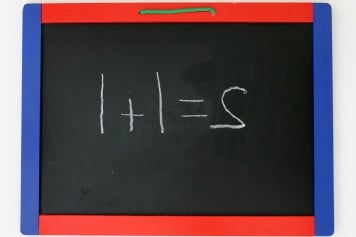For India, the year 2001 is synonymous with a mind-boggling exercise called the Census. It literally means taking a head count of the number of people there are in the country. Done every 10 years, the arrangements for this are made on a war footing by the Government of India.
The 14th National Census commenced in the beginning of February, 2001 and continued till the end of the month. Special committees have been set up to monitor this gargantuan national exercise which aims at mapping the status of the over one billion people living in this country.
To be acknowledged in the Census is important for it becomes the basis of official calculations in disbursing resources for different segments of the population and setting long-term goals for their betterment.

The Disability Census 2001 – A Battle Won? [Illustration by Shinod AP]
The background
The first National Census was conducted in 1872 and the physically and mentally challenged people of the country were kept in mind.
But in 1941, the colonial government dropped the disability clause as a category from the Census. Javed Abidi, activist and founder of National Centre for Promotion of Employment for Disabled People (NCPEDP) elaborates. Only in the years 1951-1961 and 1971, did independent India make some efforts to estimate the requirements of the disabled in the Census by doing a head count.
‘Totally’ Insensitive Census of 1981
Even the Census of 1981, which was declared the International Year of the Disabled, made only half-hearted efforts to acknowledge the disabled meaningfully, remarks Abidi.
How half-hearted these attempts were becomes clear when you look at the three main categories under which the disabled were counted in the 1981 Census: totally dumb, totally crippled and totally blind.
“The categories themselves speak for the ‘total’ lack of sensitivity and seriousness with which the government undertook this task,” points out Abidi. Since, obviously a majority of the disabled are not “totally” crippled, blind or dumb, a large percentage of the population suffering from disabilities was not counted in the disabled category.
The other conditions such as the mentally challenged, hearing impaired, partially blind or deaf were absolutely left out. There was no provision for these conditions, says Abidi, putting the problem in perspective.
In 1991, the disability clause was dropped again from the Census for no clear reason. If one went by that Census, then the number of people suffering from disabilities in India stood at 0.2 per cent of the total population. Needless to say, this was a completely unbelievable figure, points out Abidi.
Having wised up to the official sensibilities, NGOs pursuing advocacy of the rights of the disabled started lobbying for their cause from December 1999 and continued till June 2000.
Their efforts bore fruit: the Census Commissioner not only agreed to recognise a larger number of categories of disability in the Census, he also acquisced to a broader interpretation of the clause of disability, thus moving away from the earlier clause of totality.
The five categories of disability in the 2001 Census:
- Speech disability
- Locomotor disability
- Hearing disability
- Visual disability
- Mental disability
There is a definite plugging of gaps in these categories. The wording leaves very little ambiguity in the classification of the disabled and words like “total” have been “totally” done away with.Since the government can assign resources for different sections of its population only after an accurate enumeration, advocacy groups have been exhorting people to declare the presence of a disabled person in their homes as accurately as possible.
With social stigma still being a major deterrent in this task, lobbyists have resorted to mass media advertising. NGOs such as NCPEDP are particularly conscious of reaching out to rural India where disability of one kind or the other is looked upon as a stigma for the family.
The message is very clear – it is the “normal” people comprising the “mainstream” who need to free themselves of restrictive mindsets, be they in the corridors of power, administration or within the four walls of the home.
The Census of 2001 seems to have made a beginning. Only time will reveal the efficacy of efforts.










